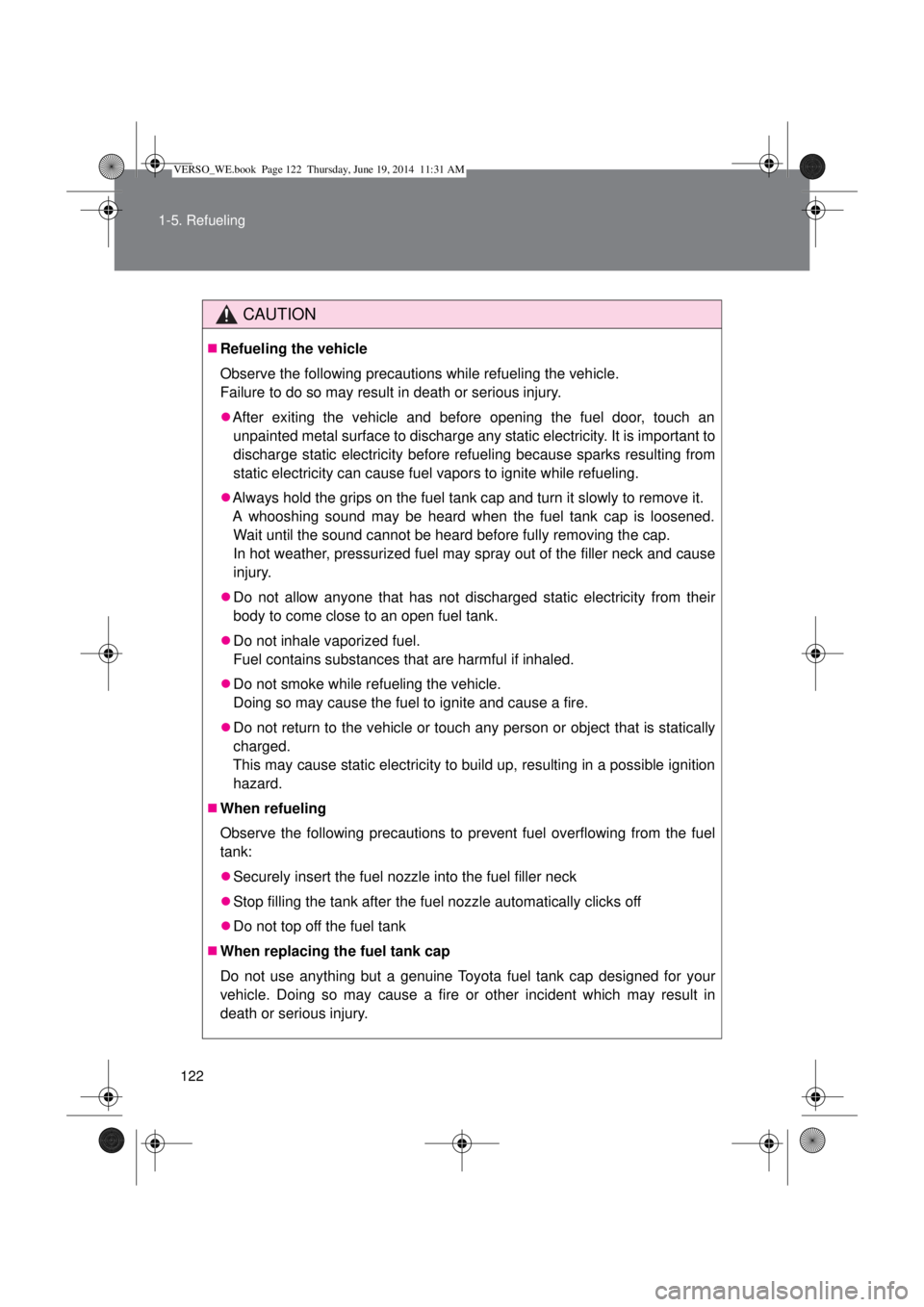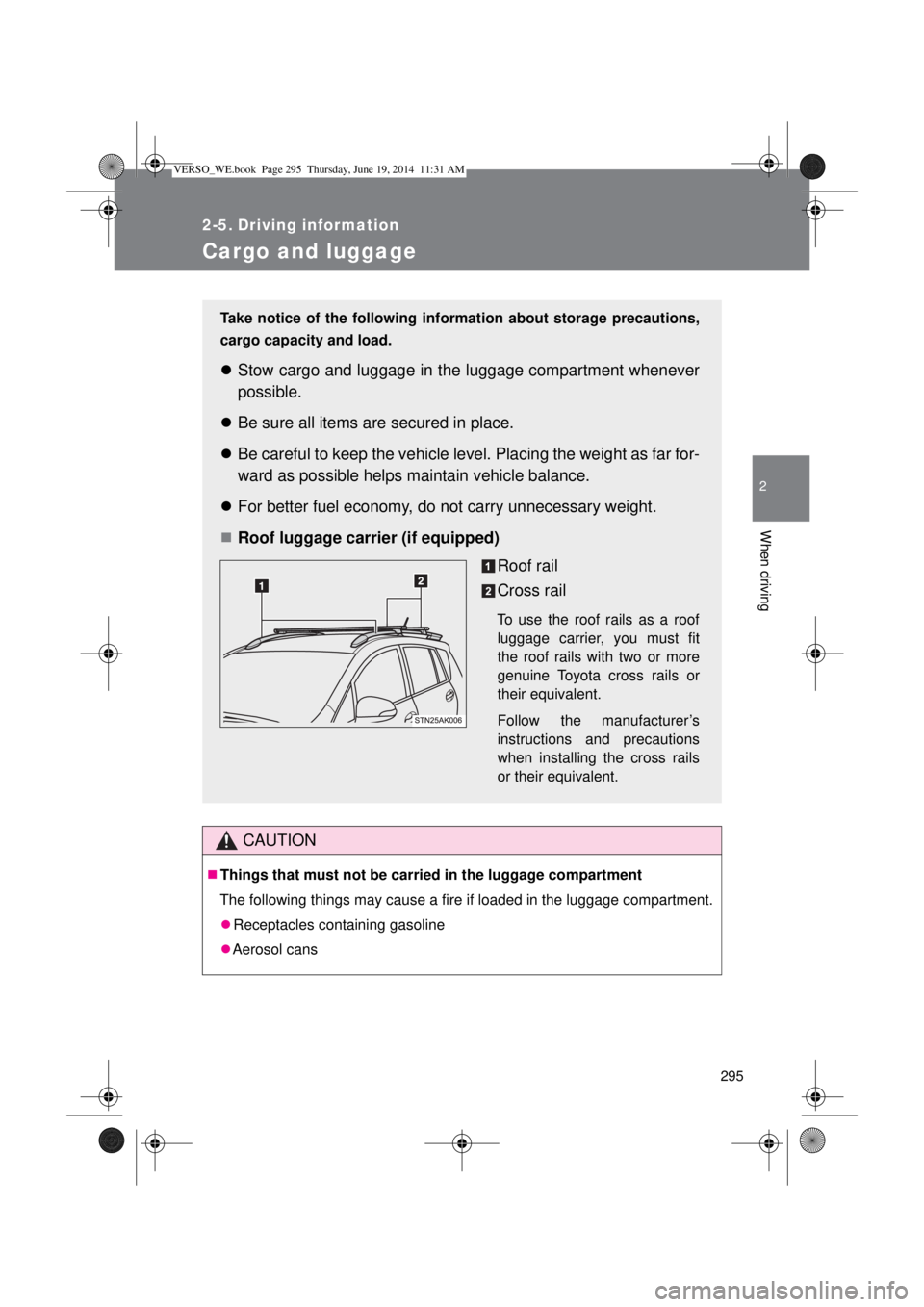Page 2 of 650

TABLE OF CONTENTSIndex
2
1-1. Key information
Keys ...................................... 38
1-2. Opening, closing and locking
the doors
Smart entry & start system.. 42
Wireless remote control ........ 64
Side doors............................. 73
Back door.............................. 79
1-3. Adjustable components
(seats, mirrors, steering
wheel)
Front seats ............................ 84
Rear seats........................... 86
Head restraints ..................... 94
Seat belts .............................. 96
Steering wheel .................... 104
Anti-glare inside rear view mirror
105
Outside rear view mirrors.... 109
1-4. Opening and closing the win-
dows and panoramic roof
shade
Power windows ................... 112
Panoramic roof shade....... 115
1-5. Refueling
Opening the fuel tank cap ... 118
1-6. Theft deterrent systemEngine immobilizer system 124
Double locking system..... 134
Alarm................................ 136
1-7. Safety information
Correct driving posture ....... 145
SRS airbags ....................... 147
Child restraint systems ....... 158
Installing child restraints ..... 166
Airbag manual on-off system ....
177
2-1. Driving procedures
Driving the vehicle .............. 182
Engine (ignition) switch (vehicles
without smart entry & start sys-
tem) .................................. 196
Engine (ignition) switch (vehicles
with smart entry & start system)
200
Multidrive.......................... 206
Automatic transmission.... 212
Manual transmission........ 220
Turn signal lever................. 224
Parking brake ..................... 225
Horn ................................... 227
2-2. Instrument cluster
Gauges and meters............ 228
Indicators and warning lights.....
233
Multi-information display .... 239
1Before driving
2When driving
VERSO_WE.book Page 2 Thursday, June 19, 2014 11:31 AM
Page 37 of 650

1Before driving
37
1-1. Key information
Keys.................................... 38
1-2. Opening, closing and locking
the doors
Smart entry & start
system .............................. 42
Wireless remote control ...... 64
Side doors .......................... 73
Back door ........................... 79
1-3. Adjustable components
(seats, mirrors, steering
wheel)
Front seats.......................... 84
Rear seats .......................... 86
Head restraints ................... 94
Seat belts............................ 96
Steering wheel .................. 104
Anti-glare inside rear view
mirror .............................. 105
Outside rear view
mirrors ............................ 109
1-4. Opening and closing
the windows and
panoramic roof shade
Power windows................. 112
Panoramic roof shade ...... 1151-5. Refueling
Opening the fuel tank
cap .................................. 118
1-6. Theft deterrent system
Engine immobilizer
system ............................ 124
Double locking system ...... 134
Alarm ................................ 136
1-7. Safety information
Correct driving posture ..... 145
SRS airbags...................... 147
Child restraint systems ..... 158
Installing child restraints ... 166
Airbag manual on-off
system ............................ 177
VERSO_WE.book Page 37 Thursday, June 19, 2014 11:31 AM
Page 118 of 650
118
1-5. Refueling
Opening the fuel tank cap
Perform the following steps to open the fuel tank cap.
Before refueling the vehicle
Vehicles without smart entry & start system
Turn the engine switch off and ensure that all the doors and
windows are closed.
Confirm the type of fuel. (P. 120)
Vehicles with smart entry & start system
Turn the “ENGINE START STOP” switch off and ensure
that all the doors and windows are closed.
Confirm the type of fuel. (P. 120)
Opening the fuel tank cap
Pull up the fuel filler door
opener.
VERSO_WE.book Page 118 Thursday, June 19, 2014 11:31 AM
Page 119 of 650
119 1-5. Refueling
1
Before driving
Turn the fuel tank cap slowly
to open it.
Hang the fuel tank cap on the
back of the fuel filler door.
VERSO_WE.book Page 119 Thursday, June 19, 2014 11:31 AM
Page 120 of 650
120 1-5. Refueling
Closing the fuel tank cap
When installing the fuel tank cap,
turn it until you hear a click.
The cap will turn slightly to the
opposite direction when released.
Fuel types
Gasoline engine
EU area:
Unleaded gasoline conforming to European standard EN228, Research
Octane Number of 95 or higher
Except EU area:
Unleaded gasoline, Research Octane Number of 95 or higher
Diesel engine
Fuel type can be identified by the fuel label.
“DIESEL”
Diesel fuel that contains 500 ppm or
less of sulphur, and a cetane number
of 48 or higher
“LOW SULPHUR DIESEL”
Diesel fuel that contains 50 ppm or
less of sulphur, and a cetane number
of 48 or higher
VERSO_WE.book Page 120 Thursday, June 19, 2014 11:31 AM
Page 122 of 650

122 1-5. Refueling
CAUTION
Refueling the vehicle
Observe the following precautions while refueling the vehicle.
Failure to do so may result in death or serious injury.
After exiting the vehicle and before opening the fuel door, touch an
unpainted metal surface to discharge any static electricity. It is important to
discharge static electricity before refueling because sparks resulting from
static electricity can cause fuel vapors to ignite while refueling.
Always hold the grips on the fuel tank cap and turn it slowly to remove it.
A whooshing sound may be heard when the fuel tank cap is loosened.
Wait until the sound cannot be heard before fully removing the cap.
In hot weather, pressurized fuel may spray out of the filler neck and cause
injury.
Do not allow anyone that has not discharged static electricity from their
body to come close to an open fuel tank.
Do not inhale vaporized fuel.
Fuel contains substances that are harmful if inhaled.
Do not smoke while refueling the vehicle.
Doing so may cause the fuel to ignite and cause a fire.
Do not return to the vehicle or touch any person or object that is statically
charged.
This may cause static electricity to build up, resulting in a possible ignition
hazard.
When refueling
Observe the following precautions to prevent fuel overflowing from the fuel
tank:
Securely insert the fuel nozzle into the fuel filler neck
Stop filling the tank after the fuel nozzle automatically clicks off
Do not top off the fuel tank
When replacing the fuel tank cap
Do not use anything but a genuine Toyota fuel tank cap designed for your
vehicle. Doing so may cause a fire or other incident which may result in
death or serious injury.
VERSO_WE.book Page 122 Thursday, June 19, 2014 11:31 AM
Page 295 of 650

295
2
When driving
2-5. Driving information
Cargo and luggage
CAUTION
Things that must not be carried in the luggage compartment
The following things may cause a fire if loaded in the luggage compartment.
Receptacles containing gasoline
Aerosol cans
Take notice of the following information about storage precautions,
cargo capacity and load.
Stow cargo and luggage in the luggage compartment whenever
possible.
Be sure all items are secured in place.
Be careful to keep the vehicle level. Placing the weight as far for-
ward as possible helps maintain vehicle balance.
For better fuel economy, do not carry unnecessary weight.
Roof luggage carrier (if equipped)
Roof rail
Cross rail
To use the roof rails as a roof
luggage carrier, you must fit
the roof rails with two or more
genuine Toyota cross rails or
their equivalent.
Follow the manufacturer’s
instructions and precautions
when installing the cross rails
or their equivalent.
VERSO_WE.book Page 295 Thursday, June 19, 2014 11:31 AM
Page 302 of 650

302
2-5. Driving information
Trailer towing (except Morocco)
Your vehicle is designed primarily as a passenger carrying vehicle.
Towing a trailer will have an adverse effect on handling, perfor-
mance, braking, durability, and fuel consumption. Your safety and
satisfaction depend on the proper use of correct equipment and cau-
tious driving habits. For your safety and the safety of others, do not
overload the vehicle or trailer.
To tow a trailer safely, use extreme care and drive the vehicle in
accordance with the trailer’s characteristics and operating condi-
tions.
Toyota warranties do not apply to damage or malfunction caused by
towing a trailer for commercial purposes.
Ask your local authorized Toyota dealer or repairer, or another duly
qualified and equipped professional, for further details before tow-
ing, as there are additional legal requirements in some countries.
Weight limits
Check the allowable towing capacity, GVM (Gross Vehicle
Mass), MPAC (Maximum Permissible Axle Capacity), and per-
missible drawbar load before towing. (P. 598)
Towing hitch/bracket
Toyota recommends the use of the Toyota hitch/bracket for your
vehicle. Other products of a suitable nature and comparable
quality may also be used.
VERSO_WE.book Page 302 Thursday, June 19, 2014 11:31 AM